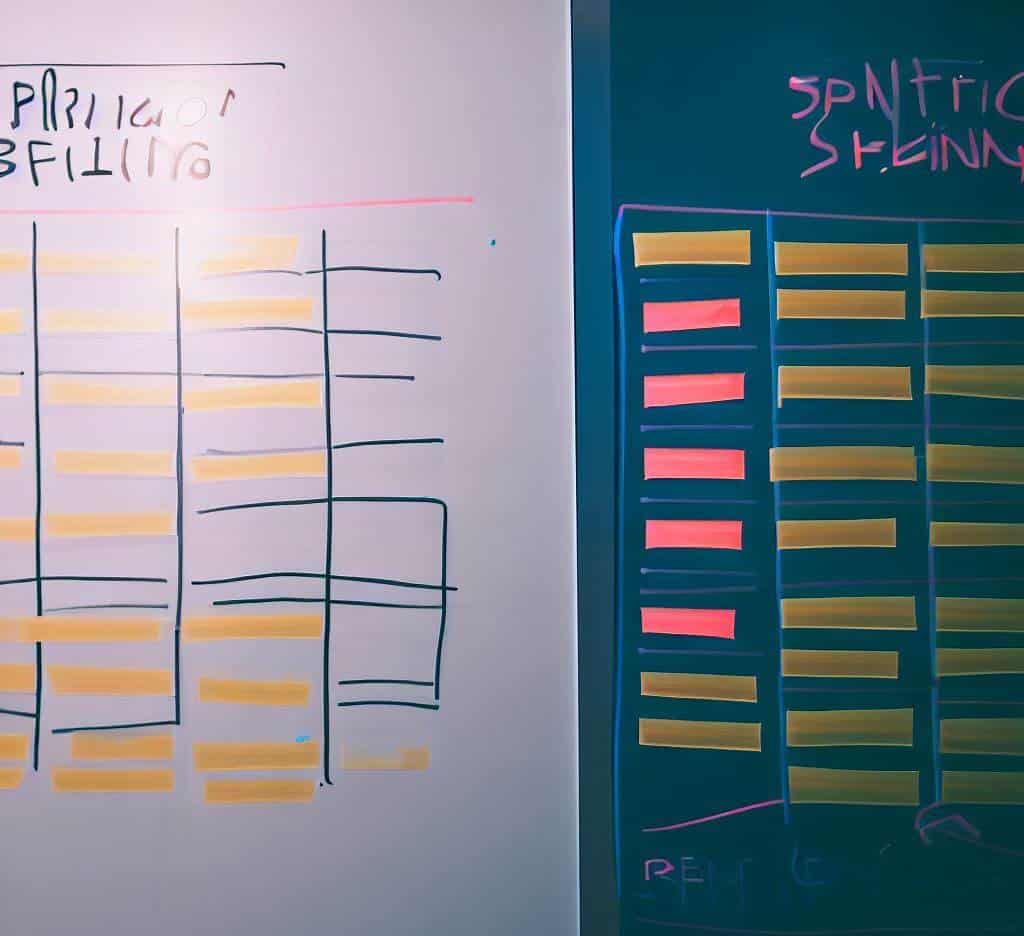Agile offers a methodology and many practices designed to streamline software development and improve end-product quality. Two of these practices, backlog refinement and sprint planning are crucial. They serve distinct purposes in an Agile project, and they can have a significant impact on the outcome. This post will explore the concepts of backlog refinement and sprint planning. We’ll help you understand the differences and explore the best time to complete both efforts.
What is backlog refinement?
Backlog refinement, (also known as backlog grooming) is a process where the product owner and the rest of the team review items on the product backlog. The goal is to ensure they’re appropriate, detailed, and prioritized. Tasks like adding new user stories to the backlog, estimating effort, and reprioritizing existing stories happen during this time.
If you want more guidance on optimizing backlog refinement sessions to drive agile success, read: Maximizing Your Agile Workflow: The Benefits of Backlog Refinement Sessions.
What happens during backlog grooming?
During backlog grooming or refinement, the product owner presents the backlog items to the team, explaining each item’s objective and value to the end product. The team then discusses these items, asks questions for clarity, and provides effort estimations based on complexity and the amount of work required to complete them.
Backlog grooming also involves reprioritizing backlog items. The team might move items up or down the list depending on changes in project scope, customer needs, or the product owner’s strategic vision. It ensures that the most critical and valuable items are at the top of the list, ready to be addressed in the next sprint.
All of this is an effort to keep the backlog updated, clean, and ready for sprint planning. That helps the team better understand the product’s roadmap and the work ahead. It also increases the team’s efficiency and productivity.
When should backlog refinement happen?
Backlog refinement is a continuous process. This practice ensures the backlog remains relevant, updated, and prioritized for smoother sprint planning sessions. In Agile, three primary types of backlogs exist. It’s important to understand them, as the way you approach grooming and prioritization can differ.
Product backlog: This includes features and functionalities that the team plans to implement that have not been prioritized for release yet.
Release backlog: Features and components that must be implemented for a specific release.
Sprint backlog: Uuser stories and tasks that need to be accomplished within a defined timeframe, typically during a specific sprint. This is what we’ll focus on next.
What is sprint planning?
While backlog refinement is about preparing and prioritizing the backlog, sprint planning is the process of deciding what to work on in the next sprint. It involves the entire Scrum team and serves as a roadmap for the work ahead. According to the Scrum Alliance, 86% of Scrum teams hold a sprint planning meeting.
Sprint planning helps teams to a practical goal for the next sprint and determine the set of backlog items they’ll commit to delivering. This way, everyone aligns around a shared goal and direction for the duration of the sprint.
When should sprint planning happen?
Sprint planning occurs at the beginning of each sprint. The length of the session can vary depending on the sprint’s length, so you’ll need to find what works best for you and the way your team communicates.
During sprint planning, the team collaboratively decides the sprint goal. That’s a short, succinct description of what the team plans to achieve during the sprint. The product owner often suggests the goal based on the product roadmap, and the team then selects high-priority items from the product backlog that aligns with this goal. The team also discusses each item’s implementation and breaks them down into tasks if necessary.
Why is sprint planning important?
Sprint planning is critical because it establishes a clear framework for the upcoming sprint. It ensures that everyone knows their responsibilities so those objectives can be accomplished quickly and efficiently.
By dividing the project into smaller, more manageable segments, teams can reduce the amount of time spent figuring out what to do next, empowering them to be more productive. This can boost morale and job satisfaction by providing more frequent and rewarding work experiences.
Backlog refinement vs. Sprint planning
While backlog refinement and sprint planning may seem similar, their purpose, timing, and outcomes are different. Backlog refinement is an ongoing activity that ensures the backlog’s readiness for the next sprint planning session. It’s a granular, detail-oriented process that lays the groundwork for the upcoming sprint.
In contrast, sprint planning is a session that happens at the start of each sprint. The team uses the refined and prioritized backlog to select the items they will work on and move toward completion. The sprint planning session focuses on defining a sprint goal, backlog items that align with that goal, and implementation strategies.
Is it wrong to treat refinement like a planning session?
While it may be tempting, you should avoid treating backlog refinement as an opportunity to have a planning session. Drawing a clear distinction between backlog refinement and sprint planning is essential. Backlog refinement can feed into sprint planning, but it should not turn into a planning session.
If backlog refinement does become a mini-planning session, it can lead to decisions being made without considering the sprint goal or the team’s capacity. It may also impact the team’s flexibility to respond to changes in project requirements.
How to make more sense of your next sprint and the backlog
Now you have the knowledge you need to keep the backlog updated, detailed, and ready for sprint planning. Recognize that while backlog refinement informs sprint planning, both serve distinct functions and should remain separate processes. If you’re successful in holding that line, you’ll see positive change in your software development workflow.
Looking for more insights? Stay connected to the Unosquare blog for more helpful guides to modern software development, and get in touch today if you need added support for your next project from our experienced and talented development professionals.



